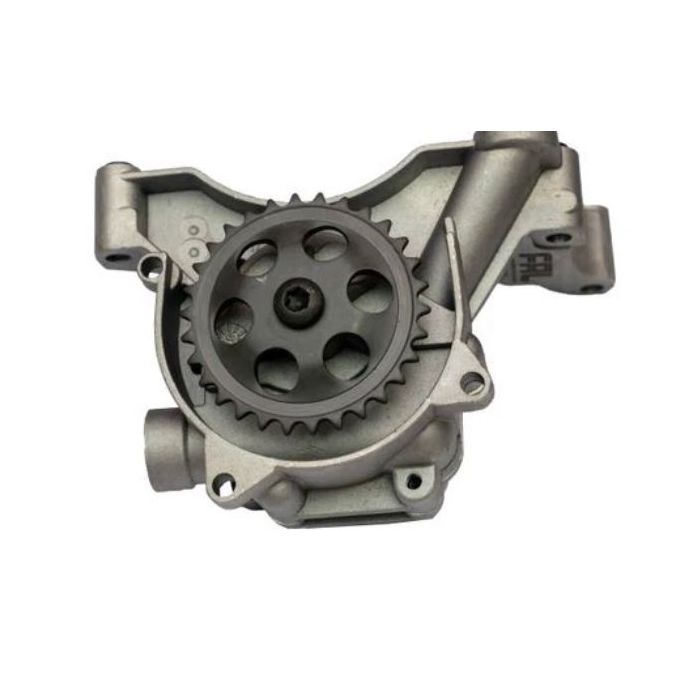Ensure long-term reliability with the right clp engine.
Ensure long-term reliability with the right clp engine.
Blog Article
How a Clp Engine Can Boost Effectiveness in Various Industries
The introduction of CLP engines notes a significant change in functional effectiveness throughout different industries, driven by their ability to enhance fuel intake and lessen downtime. As organizations significantly focus on sustainability alongside effectiveness, the role of CLP engines ends up being even a lot more critical.
Review of CLP Engines
CLP engines, or Continual Liquid Propellant engines, stand for a significant development in propulsion modern technology, especially for room applications. These engines utilize a constant feed system that permits the continual expulsion of propellant, causing enhanced performance and performance compared to traditional strong or hybrid propulsion systems. By preserving a consistent circulation of liquid propellant, CLP engines can achieve a lot more precise thrust control, which is crucial for maneuvering spacecraft in various objective circumstances.
The design of CLP engines incorporates sophisticated products and cutting-edge fuel administration systems. clp engine. This causes minimized weight and increased integrity, crucial elements for long-duration space missions. The continuous operation lessens the threat of burning instability, a typical challenge in conventional rocket engines.

Advantages in Manufacturing
The production of Continual Fluid Propellant (CLP) engines presents numerous notable benefits that improve both effectiveness and cost-effectiveness. One of the primary advantages is the streamlined manufacturing process, which minimizes the complexity connected with traditional propulsion systems. By making use of liquid propellant, manufacturers can achieve higher precision in engine efficiency, leading to maximized power result and lowered waste.
In addition, CLP engines promote a higher level of modularity, permitting less complicated integration right into various production lines. This versatility can substantially decrease lead times and boost overall operational versatility. Using CLP modern technology additionally has a tendency to reduce the demand for considerable maintenance as a result of fewer moving parts, which equates right into lowered downtime and operational expenses.

Applications in Logistics
Leveraging Constant Liquid Propellant (CLP) engines in logistics supplies considerable benefits in functional efficiency and integrity. These engines give a robust service for numerous transport requirements, making it possible for the smooth activity of goods across vast distances. The inherent style of CLP engines enables regular power output, which translates right into smoother and more predictable transportation schedules.
Among the vital applications of CLP engines in logistics is in heavy-duty products transportation, where they can drive both ground and airborne vehicles. Their capability to preserve high performance under differing load conditions guarantees that shipment timelines are satisfied, consequently enhancing customer satisfaction. Furthermore, CLP engines can be incorporated into automated logistics systems, facilitating real-time tracking and optimizing course preparation.
In addition, the toughness of CLP engines minimizes maintenance downtime, permitting logistics companies to optimize go to the website their operational capacities. This is specifically helpful in warehousing procedures, where performance in dealing with and moving items is important. As logistics continues to progress, the combination of CLP engines stands for a forward-thinking strategy that not just improves efficiency but likewise sustains the industry's expanding needs for reliability and rate.
Effect On Energy Performance
How do Continuous Fluid Propellant (CLP) engines enhance energy performance in transport? CLP engines use a regular flow of fluid gas, optimizing burning procedures and maintaining a secure drive outcome. This layout decreases energy losses related to conventional combustion engines, where gas delivery can differ and result in ineffectiveness.
The continual procedure of CLP engines permits a much more reliable thermal cycle, resulting in greater specific impulse contrasted to standard engines. clp engine. This converts to lowered fuel intake for the very same quantity of job done, substantially lowering operational prices throughout various transport sectors, including aviation and maritime industries
Additionally, the capability of CLP engines to keep optimal performance under varying lots problems decreases the need for frequent velocity and slowdown, even more boosting gas performance. Improved energy effectiveness not just adds to cost savings however additionally brings about lower greenhouse gas discharges, straightening with international sustainability goals.
Future Trends and Innovations
Arising advancements in Constant Fluid Propellant (CLP) engine technology promise to reinvent the landscape of transport performance and sustainability. As industries pivot toward greener options, CLP engines stand at the forefront, integrating ingenious products and layout methodologies that boost efficiency while minimizing ecological influence.
One of one of the most encouraging fads is the fostering of hybrid systems Continue that integrate CLP engines with renewable resource resources. This synergy can maximize gas intake and decrease exhausts, lining up with international sustainability objectives. Additionally, developments in computational liquid characteristics (CFD) are promoting the design of even more aerodynamically reliable engines, resulting in minimized drag and boosted gas performance.
Additionally, the development of clever monitoring systems is readied to improve operational performances. These systems take advantage of data analytics and IoT technology to maximize engine efficiency in real-time, making sure that the engines run within their most efficient parameters.
As research continues to discover different propellant solutions-- such as biofuels and synthetic gas-- the future of CLP engines looks encouraging. By taking advantage of these technologies, markets can not only boost their efficiency but likewise contribute considerably to a cleaner, much more sustainable future in transport.
Final Thought
In conclusion, CLP engines represent a substantial development in efficiency across several markets. The integration of innovative materials and fewer moving components decreases upkeep needs, while positioning with sustainability goals placements CLP engines as a crucial innovation for the future.
Report this page